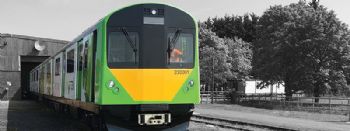
Vivarail (
www.vivarail.co.uk), the company giving a new lease of life to former London Underground trains in County Durham, intends to run its first production battery-powered unit on the national railway network this summer; it will have full approval to carry passengers.
The two-car train has four banks of lithium-ion batteries (two under each carriage) with a combined capacity of 106kWhr and a range of 40 miles.
It requires an 8min charge at each end of the journey, but with a 10min charge the range is extended to 50 miles. This range is expected to increase as battery technology develops.
The train can be charged through existing infrastructure (overhead line or third rail); for non-electrified lines Vivarail has developed a static battery bank.
In a statement the company said: “The train simply stops at the marker board and connects to the power source without the need for human intervention.
“The rate of charge is identified by the on-board power electronics; and once the charge time is complete or the driver selects power, the system shuts down before the train pulls away.”
The charging point needs an electrical supply of 11kV or 33kV, but if the supply is not strong enough a static battery bank can be used to provide an energy reserve, charging overnight and discharging to the trains through the day.
This method takes advantage of lower overnight electricity tariffs.
Vivarail’s business is based on re-engineering and completely refitting former London Underground D-Stock trains for use on the national network.
With their aluminium bodies these trains are still in good condition and are expected to have a useful lifespan on lines where there is no requirement for high speeds.
A modular concept means that traction power can be provided by diesel generators or battery packs, either of which will fit into the same area under the body for connection to the train’s electronic systems.
The company is also investigating the possibility of using fuel cells to replace or supplement the batteries.
It says “we foresee our trains running with hydrogen power in the next few years”.